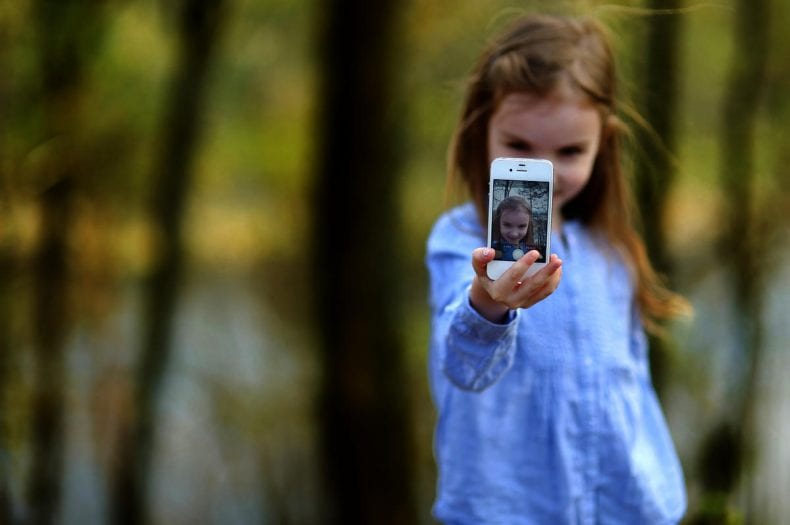You carry a baby inside you for nine months, in your arms care for three years and in your heart till your soul reaches the grave.
A child is a blessing to parents who want every step of their journey recorded and preserved for life in pictures. Their first laugh, the first sneeze, first hair cut and what not. Parents want the world to see and live their baby’s life through vivid images and snapshots. Oh, he giggled? ‘Hashtag #mybabysfirstgiggle’ on Twitter. The truth is, we are stuck in a digital age, and the ultrasound images find a spot on your social feed before anything else.
Parents that share parenting moments online called ‘Sharenting’ is bombarding the web with cute pictures all over. There is no doubt that social media can be a beautiful thing and everything shines through posts and tweets that present beautiful moments of children; the extraordinary amount of happiness that parents receive from those ‘aw’ comments and likes.
But has anyone considered maybe parents are overdoing it and inviting a privacy threat? In 2017 mothers days saw more posts on Facebook on a single day than any other occasion throughout the year. This is to be noted as more and more sharenting is being done.
But with a population of 80 million baby boomers growing an online presence, is it safe to say that parents are making a big mistake? Let’s talk about the risks of sharenting.

Exposure to Predators
One of the prime risks of posting pictures of your children and infants on social media platforms would be to engage the attention of predators looking for the right fit. Even with the strongest privacy settings, your friends and friends of friends can share those photos. Its highly unlikely that their privacy settings would be as tight as yours which would lead to your cute baby photo spreading on all social media platforms.
If you have considered taking your child’s picture at a known place and have left a flag when you were there, there is a high chance predators may be pinpointing your child’s exact location. Not everything is supposed to land on social media; try to avoid your baby or child’s over-exposure.
Cyber Security Expert – Giving Access to your Childs Images
Your photos going in the wrong hands would be a disaster says Russell Schrader, executive director of the National Cyber Security Alliance. The bigger concern is digital kidnapping. It is when parents post or share photos of someone else’s child on their social media accounts as if that child is theirs. This is alarming as you never know who gets hold of those pictures? Who downloads them and what is the intention of the person. Social media is to connect and not everyone added on your accounts is a ‘friend’.

A horrendous Australian study found that more than 50% of the images shared and distributed on shady websites were harvested from social media platforms.
Giving Away Personal Information
We can create multiple fences online to protect our kids from danger, whether it’s doing a security check up on the babysitter hired or using the best security alarm system to keep your home safe. But on the internet, parents do nothing and ignore the most basic security threats that are present which are somehow invisible to parents. For example, a cute wave (in the picture) while your child sits in the bus en-route to school could possibly give away your home or street address.
Identity theft is an alarming situation which needs to be taken seriously by parents before it gets too late. This leads to your child or baby’s fake profile being created online which can be used as a means to connect with unknown children and mothers on unknown websites.
Best Way to Protect Kids Privacy in this Digital Era?
Regardless of where you stand on the issue, its high time to use some serious online privacy tools and start incorporating them.

Don’t Post Everything Online
Before you hit the share button, think for a moment what and why you are posting and is there anything in the image that could leak your child’s personal details? Parents need to be careful with any identifiable information and should remove it if found in the picture or merely don’t share it.
This would include geotags, home address, birth dates, schools, or anything that could be traced back at your child says ‘Chief Consumer Security Evangelist at McAfee Gary Davis’
Set Strict Privacy and Settings
Every image is not meant to be posted online, and one should avoid posting all the minute details and images as well. If you are not yet ready to share photos about your child, then make sure the privacy settings limit the number of people who can see and share your child’s pictures. On Facebook, you can select the number of people (such as only Friends) you’d like to give access to the album or picture.
This could include close family members or friends. But keep in mind the people in the group or who can access the pictures can anytime save the images for their own purpose.

What is the Last Resort?
You cannot stop those amazing baby moments from bombarding the social media but you can still protect those images with a few security tips to keep in mind. There are some smart parents that share pictures online anonymously and by not including the child’s name and avoiding geo-tags. It’s always better to keep your child protected at all times to remove any doubt of your child’s online presence being used by the wrong intentions.
Make sure to go through the details above to know the current Sharenting risks that are lurking around and how to prevent them before something alarming happens with your child.









